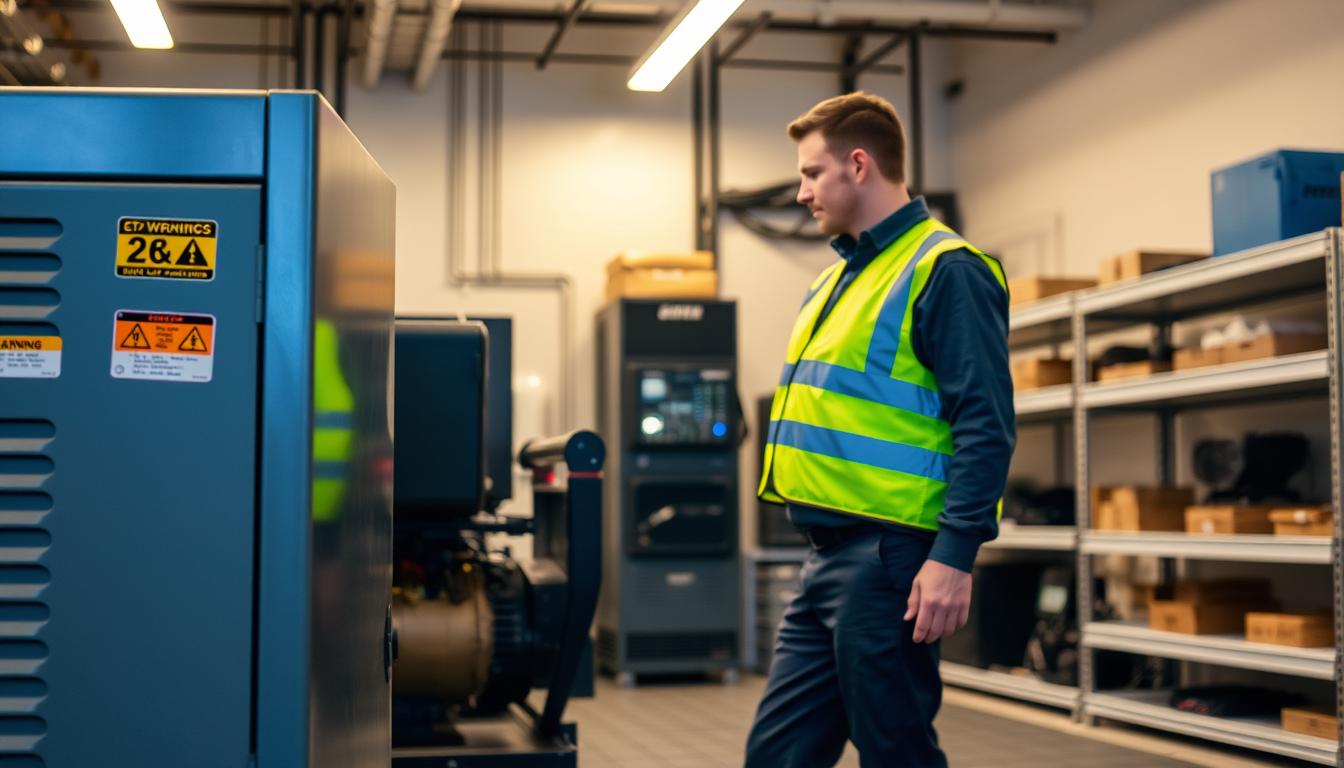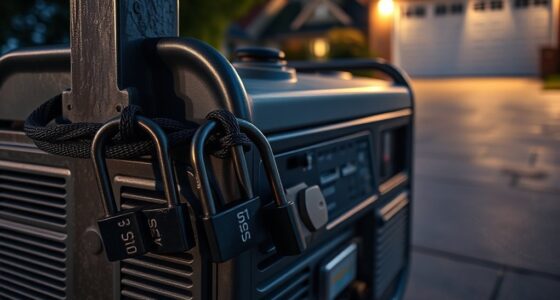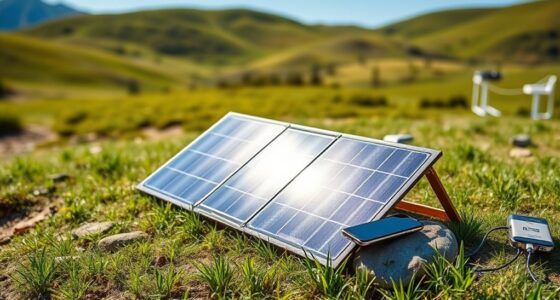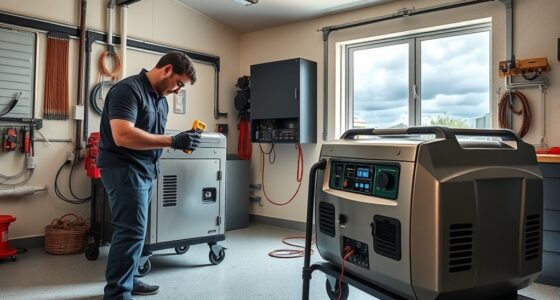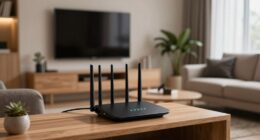When the lights go out, you want calm, not chaos. You might remember a storm night when your phone died and you felt helpless. This guide meets you where you are and gives clear steps you can use right now.
Follow the manufacturer’s instructions and test your setup before an emergency. Learn how your generator and portable station run, keep fuel and charge ready, and perform quick checks so you aren’t learning under stress.
Never run a generator inside your home or garage. Carbon monoxide is invisible and can build up fast. Place the unit outside where exhaust vents freely to protect your household and devices.
Use the right extension cords and avoid running them under rugs or through high-traffic areas. Keep batteries dry, charged, and away from open flames or smoking to reduce fire hazards.
Key Takeaways
- Read and follow manufacturer directions before you need the system.
- Test your generator and portable station with regular checks and fuel or charge ready.
- Keep generators outdoors to prevent carbon monoxide poisoning.
- Choose proper cords and routing to avoid overheating and trip risks.
- Store and use batteries correctly — dry, ventilated, and away from flames.
Plan Your Backup Power the Right Way Before an Outage
Map out your needs before an outage so your home keeps running smoothly.
Start by listing essential appliances and devices you cannot lose—refrigerator, medical gear, lights, and phone chargers. Estimate runtime for each so a generator or portable station meets your emergency needs.

Compare your options
Portable power stations give quiet, emission-free indoor use for small loads. Portable generators suit short-term basic power but need fuel and checks. Standby units can run a whole house and often start automatically.
Size and installation
Choose a generator that handles startup surges; some appliances draw three times their running amps. Pick a slightly larger size generator than your current load to allow future growth.
Check local requirements and building codes before installation. Licensed installers handle wiring, transfer switches, and inspection paperwork so the system meets rules and works when you need it.
- Match fuel or charging source—gasoline, propane, diesel, natural gas, or solar-ready stations.
- Collect spec sheets, amperage, and outlet types to avoid surprises.
Set Up and Install for Safety: Placement, Ventilation, and Wiring
Proper placement and wiring cut risk and keep your family protected. Place generators where exhaust vents freely away from doors, windows, and vents. That keeps carbon monoxide from collecting near living areas.

Clear exhaust and placement
Pick a level, firm area on higher ground to avoid flood damage and debris. Leave at least 10 feet between the unit and any openings to the home. Keep the area clear for service and ventilation.
Prevent backfeed to house wiring
Never tie a generator into house wiring without a transfer switch or an approved interlock. Backfeed can energize utility lines and endanger line workers. Hire a licensed electrician and have wiring inspected after installation.
Choose the right cords and routing
Use extension cord sizes by AWG that match the load to prevent voltage drop and heat. Avoid running cords under rugs or across doorways. Use covers or secure routing to reduce trip hazards.
| Item | Minimum Clearance | Tip |
|---|---|---|
| Portable generator | 10 ft from openings | Level pad, well ventilated area |
| Standby generator | Follow installer specs | Licensed install, code inspection |
| Extension/cord | Route away from walkways | Match AWG to load, use cord covers |
How to ensure the safe operation of backup power equipment during a power outage
Proper pre-start checks and simple habits cut risk and extend the life of your generator.
Follow the owner’s manual: run quick pre-start checks for oil, fuel, air filter, and cords. Test the unit before a power outage so you know it will start and run essential appliances.
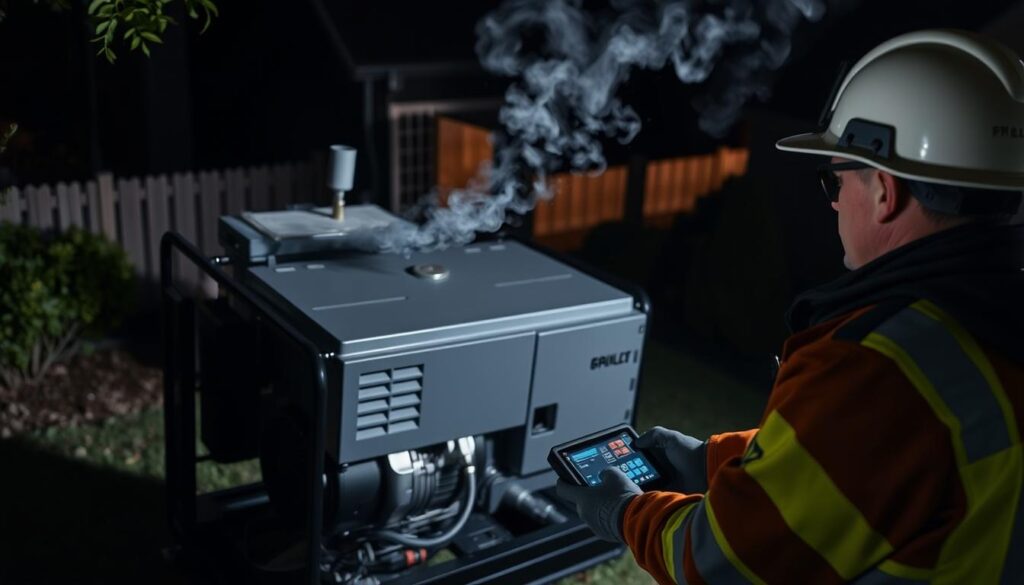
Refuel and fire precautions
Turn off a gas unit and wait at least five minutes to cool before you refuel. Keep smoking, sparks, and open flames far away to reduce fire risk.
Manage loads and outlets
Plug essentials first and match outlet ratings. Avoid overloading; generators often shut off automatically to protect the system and your devices.
Store and handle fuel
Store fuel in approved containers outside the house. Maintain a rotation so fuel stays fresh and keep enough on hand for several days.
Portable stations and weather
Keep portable stations charged, dry, and ventilated. Consider solar panels to extend runtime for critical devices during long outages.
| Task | Tip | Why |
|---|---|---|
| Pre-start checks | Oil, filter, cords | Reliable starts |
| Refuel | Wait 5 minutes, no flames | Reduce fire |
| Placement | 20+ ft from home | Prevent carbon monoxide poisoning |
- Follow instructions and perform routine maintenance.
- Check cords for heat and odd sounds during use.
Conclusion
Confirm licensed installation and notify your utility so crews know about any standby generator at your home. This step reduces risk during an outage and helps protect line workers.
Keep generators outside with clear exhaust paths to cut carbon monoxide hazards. Never tie units into utility lines. Maintain fuel supplies, allow cool-down time before refueling, and avoid smoking or open flames near any source.
Use properly sized cords and route them away from walkways and covered runs. Test start-ups, exercise your system, and keep a short checklist you can use in an emergency. With these steps, your family stays powered and your house stays protected.

